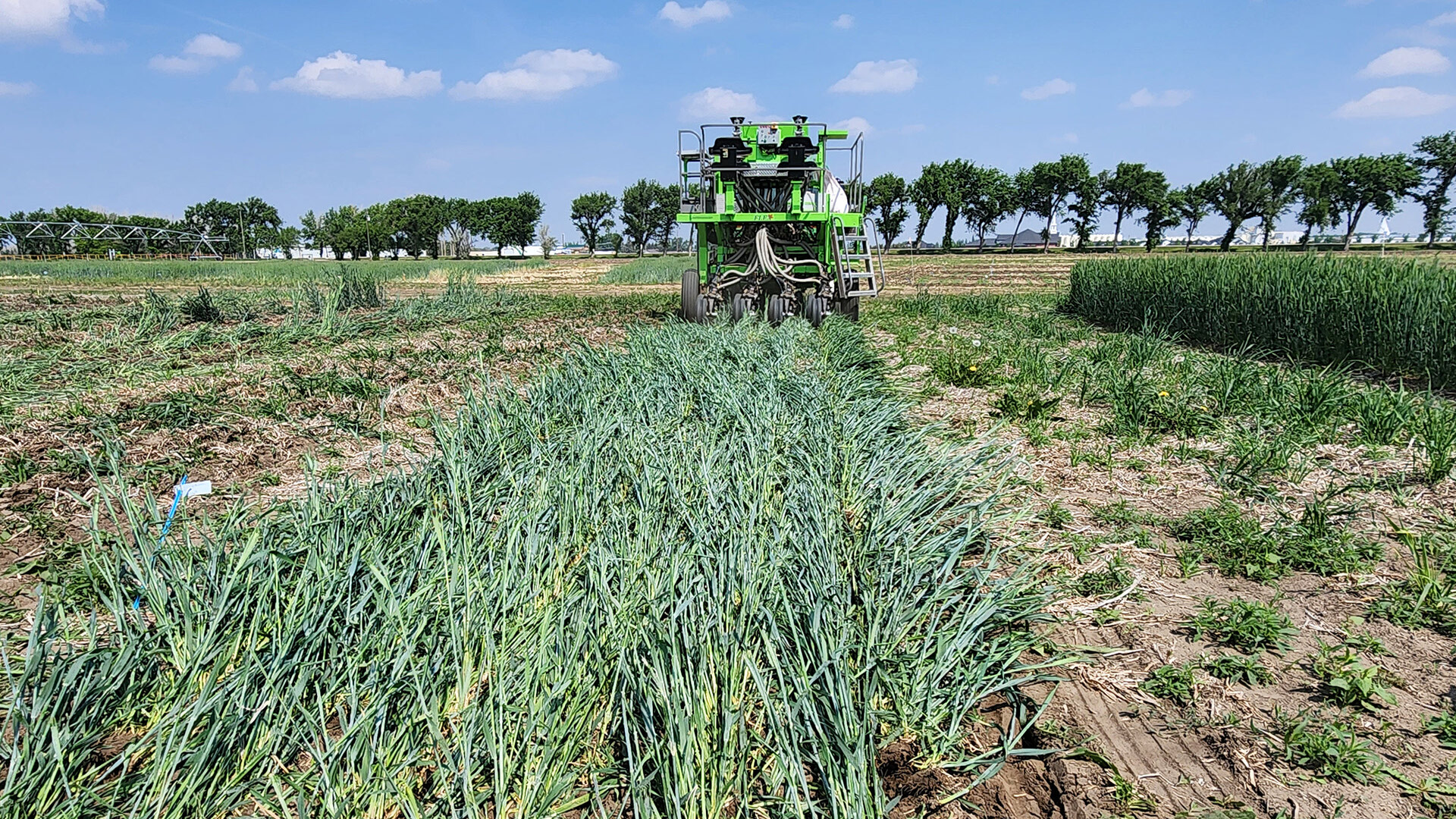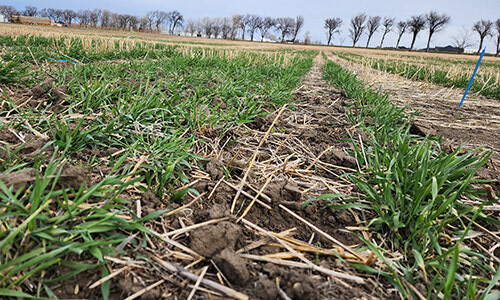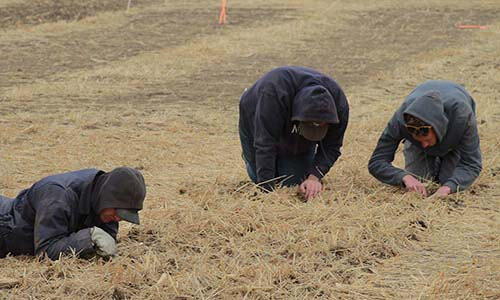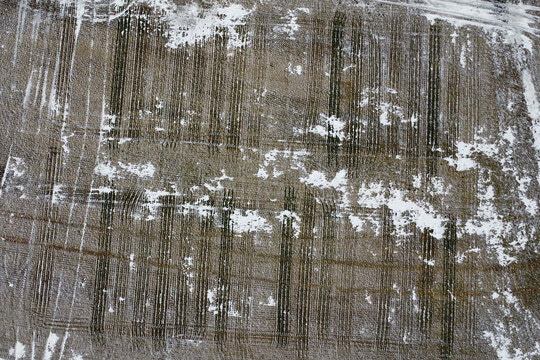Background
We have recently seen an increase in the interest in cover crop adoption, but questions remain about their viability, management, and benefits. Most benefits derived from cover cropping including soil building, erosion control, and weed suppression are directly linked to their biomass production and retention in the fields. Roller crimping is a novel management approach that can maximize biomass retention, carbon sequestration, and weed suppression by cover crops. It involves the crushing and crimping of cover crop stems without chopping them, and leaving plants flattened on surface as protective mulch. This 4-year project evaluates the feasibility of this technique under the climate regime and short season growing conditions of Alberta and its benefits to biomass production and weed suppression compared to cover crop termination by herbicide and disking methods.
|
Project Details
|
| Timeline |
2022-2027 |
| Principal Investigator: |
Mike Gretzinger
Farming Smarter |
| Project Contact: |
Mike Gretzinger |
| Funded By: |
Weston Family Foundation
RBC Tech for Nature
|
|




